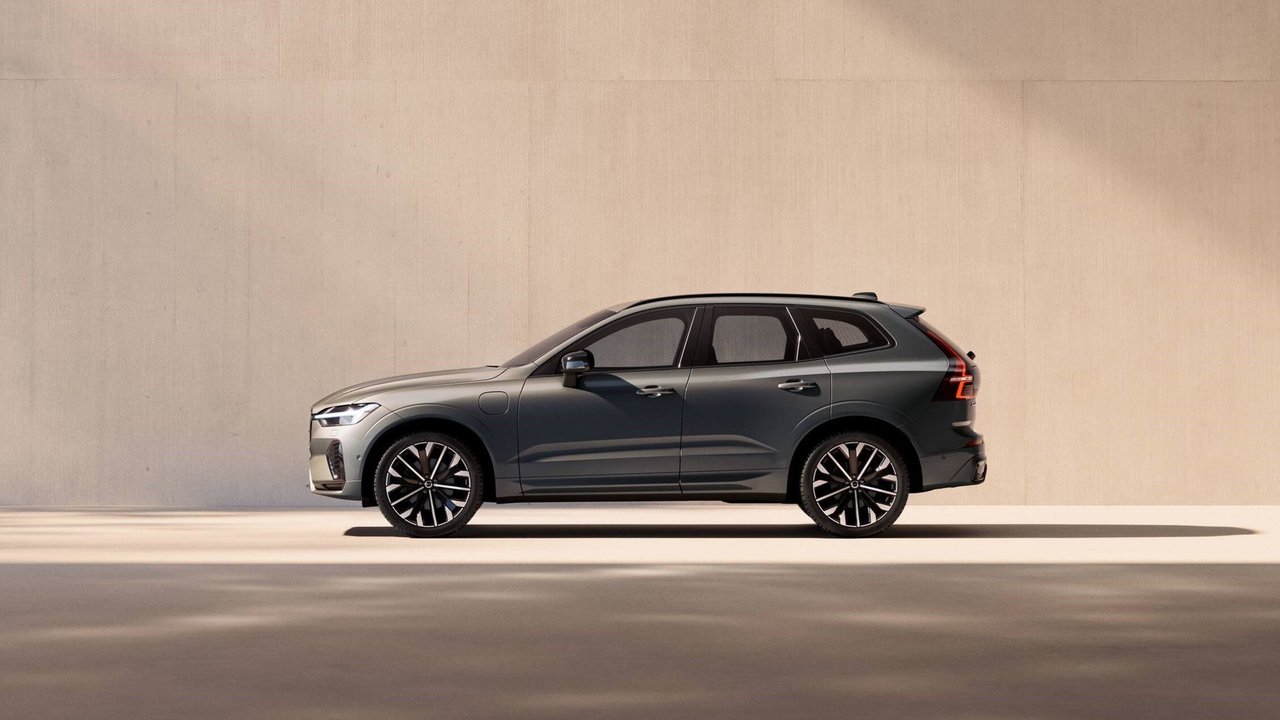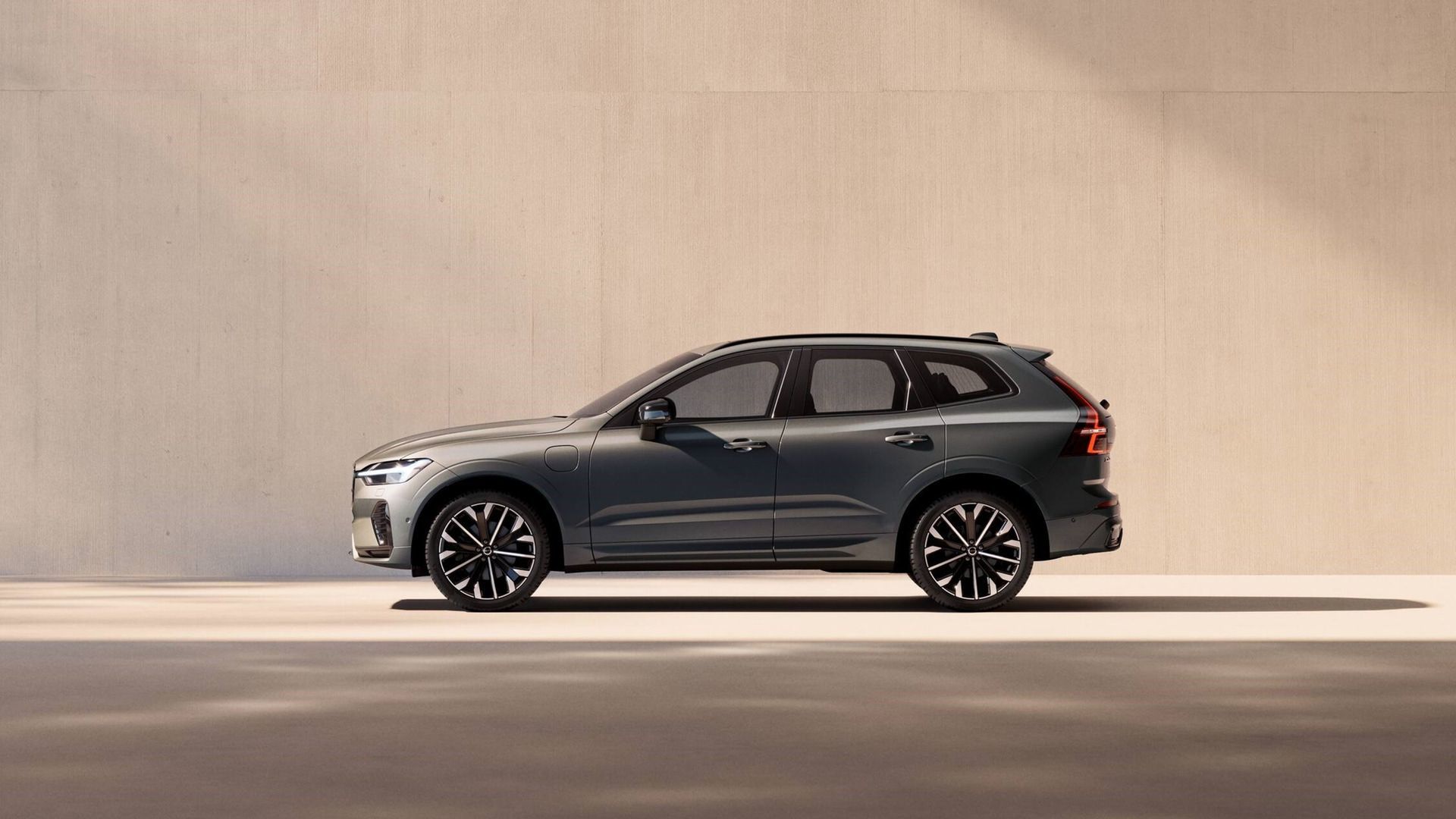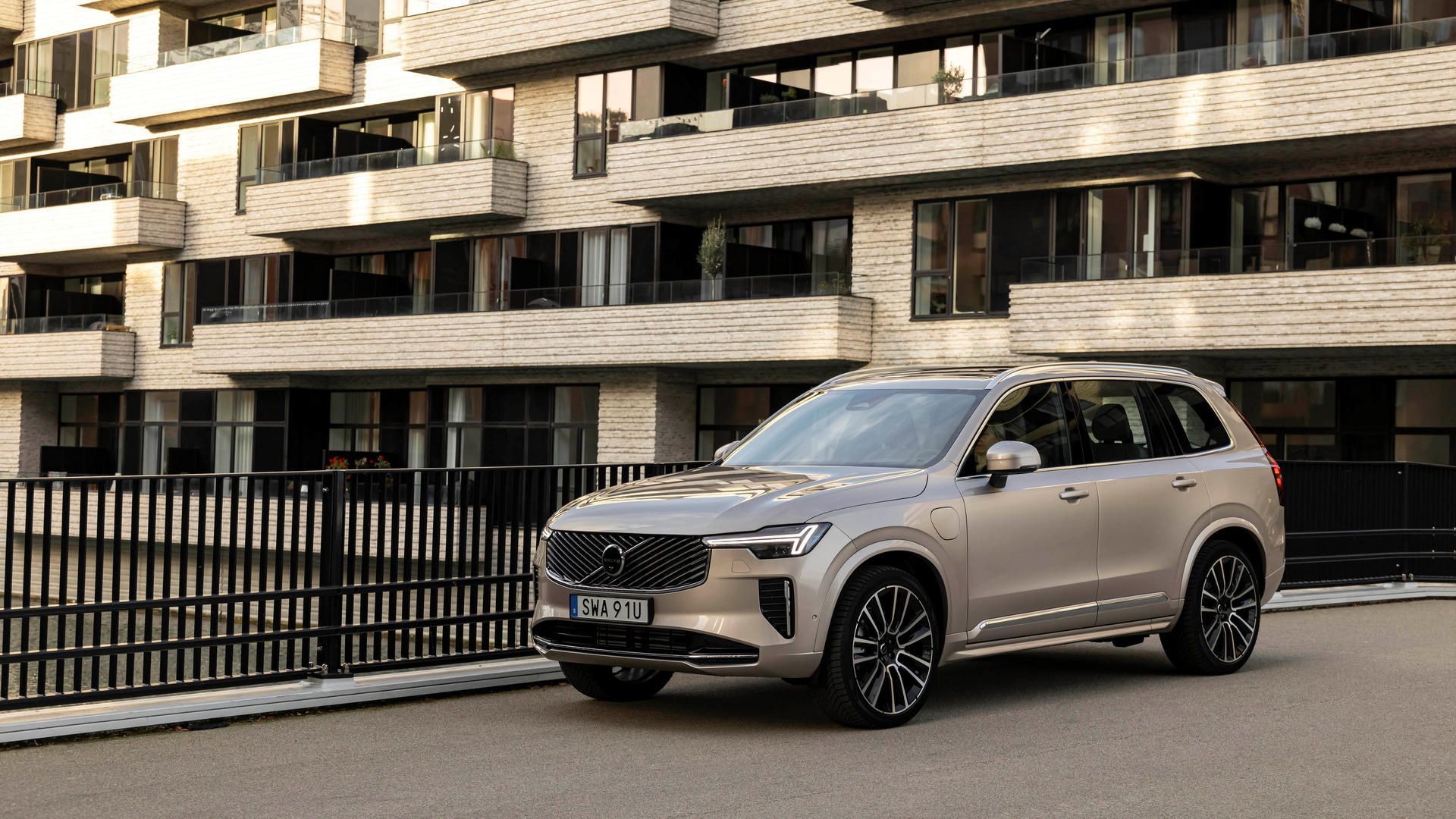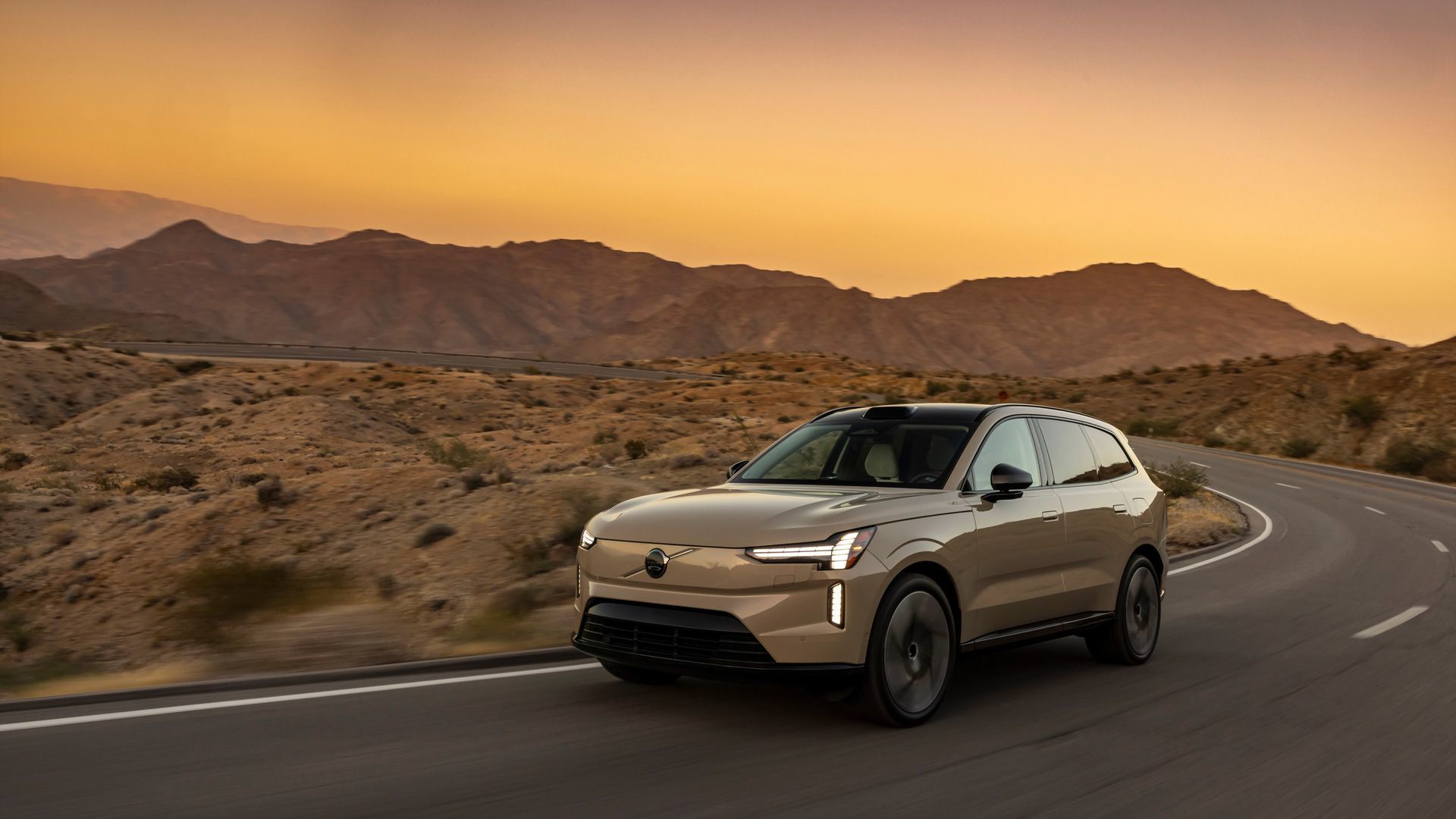
Photo for illustrative purposes only.
Find out moreVolvo Cars Hamilton

Range anxiety remains a primary concern for Ontario drivers considering electric vehicles. The worry about running out of power far from charging infrastructure has slowed adoption, particularly for those who regularly travel beyond urban areas or take spontaneous trips to destinations without guaranteed charging access.
The Volvo XC60 T8 plug-in hybrid addresses this concern through a dual-powertrain system that provides electric driving for daily commutes while maintaining gasoline-powered range for longer journeys. For Hamilton drivers balancing local errands with occasional trips to cottage country or Niagara region, this configuration eliminates the compromise between emission-free driving and travel flexibility.
How the T8 Plug-in Hybrid System Functions
The XC60 T8 combines a turbocharged 2.0-litre 4-cylinder gasoline engine producing 312 horsepower with an electric motor generating 143 horsepower. Total combined output reaches 455 horsepower, with 523 lb-ft of torque available across the power band.
An 18.8 kWh battery stores electrical energy, providing 58 km of all-electric range on a full charge. This capacity covers typical Hamilton-area daily driving—commuting from Binbrook to downtown, running errands between Ancaster and Stoney Creek, or completing the school drop-off circuit in Waterdown—without activating the gasoline engine.
When the battery depletes, the gasoline engine takes over seamlessly. The transition occurs automatically based on power demands and battery state of charge. Drivers can also manually select power modes to preserve electric range for specific portions of their route or maximize combined performance when needed.
Daily Electric Driving Economics
With 58 km of electric range, most Hamilton commutes fall entirely within battery capacity. The drive from east-end neighborhoods to McMaster University measures approximately 15 km. The commute from Waterdown to downtown spans roughly 20 km. Even the longer journey from Binbrook to Hamilton's industrial north end stays within the 58 km threshold when following direct routes.
Charging the 18.8 kWh battery using a standard household outlet takes approximately 7 hours at 10 amps or 5 hours at 16 amps. Installing a Level 2 home charging station reduces this to around 3 hours. Overnight charging ensures the vehicle starts each day with full electric range, allowing purely electric operation for regular daily driving patterns.
Ontario's electricity rates vary by time of use. Charging during off-peak hours (7:00 PM to 7:00 AM on weekdays, plus all weekend hours) takes advantage of lower rates, reducing the cost per kilometer compared to gasoline operation. The exact savings depend on current electricity and fuel prices, but the structure provides predictable operating costs for daily driving.
Extended Range for Weekend and Holiday Travel
The gasoline engine provides extended range when electric capacity is exhausted. With a 71-litre fuel tank and combined fuel economy of 8.5 L/100 km when operating in hybrid mode, the XC60 T8 can cover more than 800 km on gasoline alone after the battery depletes.
This range proves sufficient for common Ontario trips without requiring stops specifically for refueling. Hamilton to Ottawa measures approximately 450 km. The drive to Tobermory on the Bruce Peninsula spans roughly 300 km. Even reaching Sudbury, at about 530 km from Hamilton, remains well within the XC60 T8's gasoline range.
For longer trips, standard fuel stations provide familiar, quick refueling. The vehicle requires no special fuel—regular 95-98 RON gasoline works for all driving conditions. This eliminates planning around charging station locations or waiting for charge sessions to complete.
Power Mode Selection and Battery Management
The XC60 T8 provides several driving modes that adjust how the powertrain uses available electric and gasoline power:
Hybrid mode operates as the default setting, automatically blending electric and gasoline power for optimal efficiency. The system decides when to use battery power, when to engage the engine, and when to combine both based on acceleration demands, battery charge level, and predicted route requirements.
Pure mode operates exclusively on electric power until the battery depletes or power demands exceed the electric motor's capacity. This mode suits short trips where maintaining zero emissions is desired, such as driving through residential neighborhoods early in the morning or operating in areas with low-emission zone regulations.
Power mode combines full engine and motor output for maximum performance. Both power sources operate simultaneously, delivering all 455 horsepower and 523 lb-ft of torque. This mode suits highway merging, passing maneuvers, or situations where immediate acceleration is needed.
Off-road mode optimizes traction control and power delivery for unpaved surfaces. The system adjusts throttle response and all-wheel-drive torque distribution for improved grip on loose or slippery surfaces.
Individual mode allows drivers to customize various parameters, mixing preferences from other modes according to personal driving style.
Charging Infrastructure and Options
While the XC60 T8 doesn't require charging infrastructure the way pure electric vehicles do, access to charging enhances its efficiency by maximizing electric-only driving. Several options exist for Hamilton-area drivers:
Home charging provides the most convenient option. A standard 120-volt household outlet charges the battery overnight. Upgrading to a 240-volt Level 2 charger reduces charge time to approximately 3 hours. Many electrical contractors install these units, which require a dedicated circuit but integrate into existing home electrical systems.
Workplace charging has expanded across Hamilton. Many employers now offer Level 2 charging stations in parking areas, allowing employees to recharge during work hours. This effectively extends daily electric range by providing a second full charge before the evening commute home.
Public charging stations operate throughout Hamilton and surrounding areas. Shopping centers, municipal parking lots, and some curbside locations offer Level 2 charging. While not necessary for the XC60 T8's operation, these stations provide opportunities to replenish electric range during longer stops.
All-Wheel Drive Performance in Variable Conditions
The T8's electric motor powers the rear wheels while the gasoline engine drives the front wheels. This configuration creates a through-the-road all-wheel-drive system that provides constant power distribution to all four wheels when both power sources operate.
During electric-only driving, the vehicle operates in rear-wheel drive. When the gasoline engine activates, all-wheel drive engages automatically. This happens transparently to the driver but provides important traction advantages in Ontario's variable weather conditions.
Winter driving benefits from the instant torque delivery of the electric motor. When accelerating from stops on snow-covered roads, the electric motor's immediate power response helps the traction control system manage wheel slip more effectively than gasoline engines that must build rpm before delivering torque.
The system's sophisticated torque vectoring can send power to individual wheels based on available grip. If one wheel begins slipping on ice, power redirects to wheels with better traction, maintaining forward progress and stability.
Comparing Daily Operating Costs: Electric vs. Hybrid Mode
|
Scenario |
Distance |
Energy Source |
Approximate Cost* |
|---|---|---|---|
|
Hamilton to Downtown (Electric) |
15 km |
Battery Only |
$0.60 |
|
Hamilton to Downtown (Hybrid) |
15 km |
Gasoline |
$2.55 |
|
Daily Round-Trip Commute (Electric) |
30 km |
Battery Only |
$1.20 |
|
Daily Round-Trip Commute (Hybrid) |
30 km |
Gasoline |
$5.10 |
|
Monthly Commuting (Electric, 20 days) |
600 km |
Battery Only |
$24.00 |
|
Monthly Commuting (Hybrid, 20 days) |
600 km |
Gasoline |
$102.00 |
*Based on Ontario off-peak electricity rates of $0.074/kWh and gasoline at $1.70/L. Actual costs vary with current rates and driving conditions.
Maintenance Considerations for Plug-in Hybrid Systems
The XC60 T8 requires maintenance for both its electric and gasoline components. The gasoline engine follows conventional service intervals—oil changes, filter replacements, and fluid checks occur according to Volvo's maintenance schedule.
The electric motor and battery require minimal maintenance. No oil changes or tune-ups affect the electric drivetrain. The battery includes thermal management systems that maintain optimal operating temperature, protecting longevity through active heating and cooling.
Brake wear typically decreases in hybrid vehicles due to regenerative braking. When slowing or descending hills, the electric motor operates as a generator, converting kinetic energy back into electricity stored in the battery. This process slows the vehicle while reducing reliance on friction brakes, extending brake pad and rotor life.
Tire selection should account for the XC60 T8's additional weight compared to gasoline-only models. The battery and electric motor add approximately 230 kg to the vehicle's curb weight. Choosing tires rated for the vehicle's actual weight and replacing them at appropriate intervals maintains handling and safety characteristics.
Real-World Range Factors
The 58 km electric range represents testing under controlled conditions. Real-world electric range varies based on several factors:
Temperature affects battery performance. Cold Ontario winters reduce available range as battery chemistry operates less efficiently in low temperatures and cabin heating draws power. Summer heat also impacts range, though less severely than cold. Moderate temperatures provide optimal electric range.
Driving style influences efficiency. Smooth acceleration, moderate speeds, and anticipation of stops maximize range. Aggressive acceleration, high speeds, and frequent hard braking all reduce how far the battery can propel the vehicle.
Climate control use impacts range. Heating and air conditioning draw power from the battery. Pre-conditioning the cabin while plugged in—heating or cooling it before departure while still connected to shore power—preserves battery range for driving.
Route characteristics matter. Flat terrain provides better range than hilly routes requiring frequent elevation changes. Highway driving at sustained speeds can be less efficient than mixed urban driving with opportunities for regenerative braking.
Environmental Impact Beyond Tailpipe Emissions
The XC60 T8's environmental advantage extends beyond eliminating tailpipe emissions during electric operation. Ontario's electricity generation mix includes nuclear, hydroelectric, wind, and solar sources that produce minimal carbon emissions compared to fossil fuel generation.
Charging an electric or plug-in hybrid vehicle in Ontario results in lower total carbon emissions than operating a conventional gasoline vehicle, even when accounting for emissions from power generation. The province's relatively clean grid makes electric driving more environmentally beneficial than in regions where coal-fired generation dominates.
The ability to complete most daily driving in electric mode while maintaining gasoline backup for longer trips often results in significantly reduced annual fuel consumption. Data from Volvo indicates that approximately 48% of distance driven in long-range plug-in hybrid models uses electric-only power globally. Drivers with regular access to charging and predictable daily routes often exceed this average.
Experience the XC60 T8 at Volvo Cars Hamilton
The Volvo XC60 T8 plug-in hybrid eliminates the choice between electric efficiency and long-distance capability. With 58 km of electric range for daily driving and gasoline backup for extended trips, the system addresses both urban commuting and weekend travel across Ontario.
Visit our team at Volvo Cars Hamilton in Hamilton to discuss how the XC60 T8's dual-powertrain system fits your driving patterns and learn about available charging options for your home or workplace.

Photo for illustrative purposes only.
Find out more
2026 Volvo XC60: Advanced Safety and Connected Technology
The 2026 Volvo XC60 continues its position as Volvo's best-selling SUV globally, combining practical mid-size dimensions with advanced safety...
Read more
2026 Volvo XC90: A Seven-Seat SUV Built for Ontario Families
The 2026 Volvo XC90 continues its role as Volvo's flagship SUV, offering families in Hamilton and across Ontario a spacious seven-seat layout...
Read more
A Look at the Specifications of the 2025 Volvo EX90
The 2025 Volvo EX90 represents Volvo's first fully electric seven-seat SUV, combining a 111 kWh battery pack with dual electric motors to deliver...
Read more